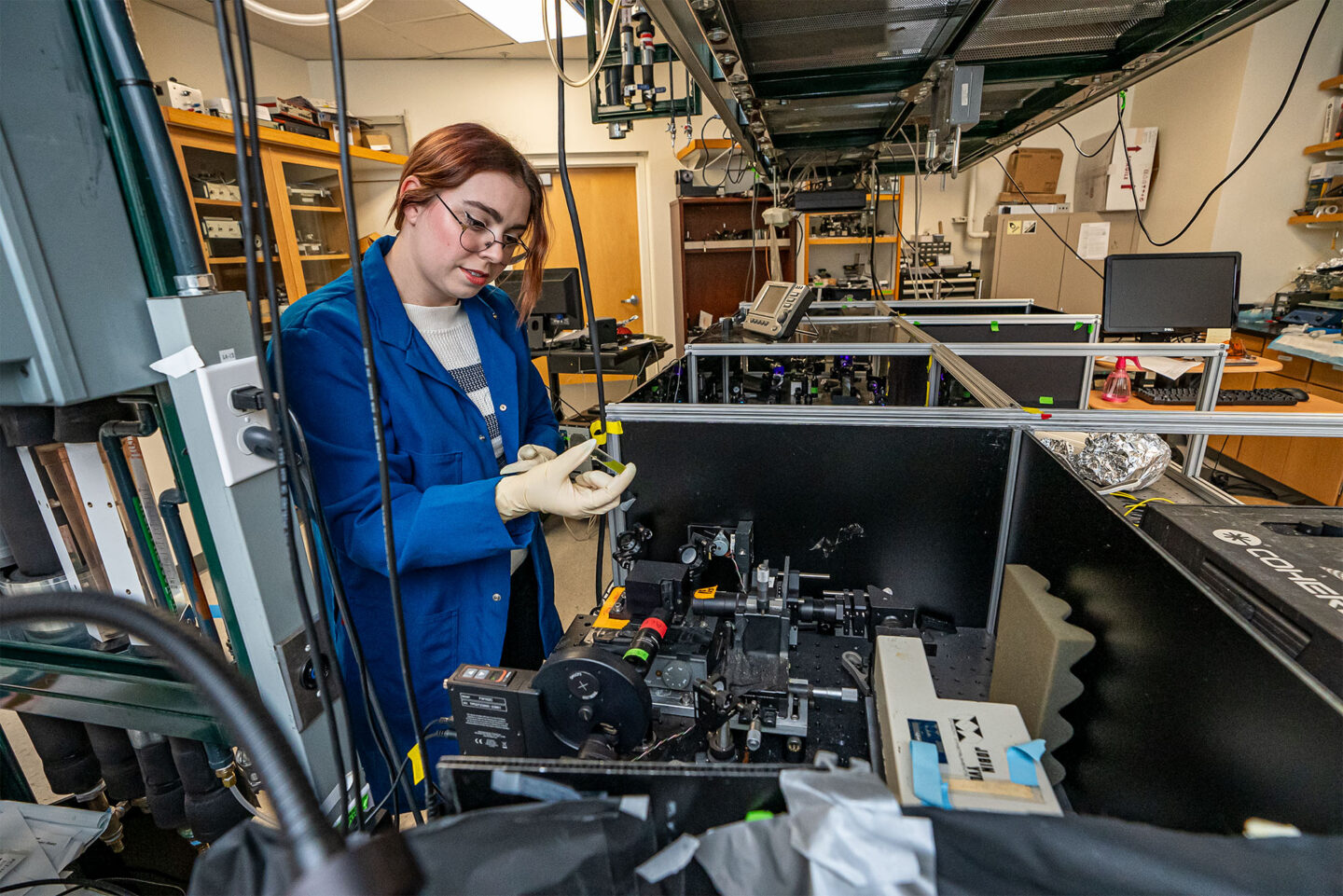Fluctuating sunlight poses a challenge for plants and green algae, which must quickly adjust their photosynthetic systems to remain efficient in changing conditions. Aiding in that response is a kind of rudimentary memory that allows these organisms to respond more rapidly to changes in light following previous fluctuations. The details of how this photoprotective memory works are now coming to light through a study led by Lawrence Berkeley National Laboratory (Berkeley Lab) scientists published recently in Nature Communications. The results may help scientists develop more productive plants and improve crop yields.
“Clouds passing in front of the sun can cause huge jumps in light intensity for a plant, going very quickly from way too much light to not enough,” said Graham Fleming, a senior faculty scientist in Berkeley Lab’s Biosciences Area and professor of chemistry at UC Berkeley, who co-led the study with Krishna Niyogi, a faculty scientist in Berkeley Lab’s Biosciences Area and professor of plant and microbial biology at UC Berkeley. “Plant efficiency, and therefore their survival, is related to how they respond to these massive fluctuations. If we understand how to improve the match between a plant’s photoprotective response and the light fluctuations, then we can improve its productivity.”
“If we understand how to improve the match between a plant’s photoprotective response and the light fluctuations, then we can improve its productivity.”
– Graham Fleming
The photoprotective response in plants and green algae involves three light-absorbing pigment molecules: violaxanthin (V), antheraxanthin (A), and zeaxanthin (Z). In the so-called VAZ cycle, fluctuations in light trigger chemical conversions between these molecules, dissipating bursts of solar energy and helping regulate and protect photosynthetic proteins.
To understand how the VAZ cycle responds to fluctuating light, the researchers worked with an alga known as Nannochloropsis oceanica, a simple model organism that also has applications in the biofuels industry. They exposed N. oceanica to irregular sequences of alternating dark and high intensity light with intervals ranging from one to 15 minutes. Using high-performance liquid chromatography the researchers measured the varying concentrations of the three pigments throughout the light sequences to determine the rates of conversions between them. They also probed the alga’s ability to dissipate light energy during the sequences by performing time-correlated single photon counting experiments.
A new model of algae memory
Informed by the experimental results, the team developed a theoretical model of the system capable of predicting its behavior in a greater range of conditions. The modeling work was led by David Limmer, a faculty scientist in Berkeley Lab’s Materials Sciences Division and a professor of chemistry at UC Berkeley.
“Modeling pulls together our ideas about biochemistry and the quantitative measurements into a cohesive picture of what’s going on, filling in the gaps that we can’t directly access with experiment,” said Thomas Fay, a postdoctoral researcher at UC Berkeley and one of the lead authors of the study. “Using the model, we can learn which components of this VAZ cycle are important in photoprotection and how the system can respond more quickly after previous exposures.”
Emerging from these results was the insight that the three-part nature of the VAZ cycle is key to the alga’s photoprotective memory. When a bright light turns on, V converts to A which converts to Z, the molecule best able to dissipate the extra light energy. When the light turns off, Z converts back to A, which eventually converts back to V. However, the various conversions happen at different rates. When the bright light turns off, the conversion from A back to V happens much slower than Z to A, so if the light suddenly comes back on, the system can reverse direction and quickly replenish the concentration of Z instead. These differences in conversion rates act as a buffer, slowing down crucial steps and allowing the system to quickly change direction if needed.
“A plant doesn’t know what kind of light conditions to expect at any moment, so this memory means that during periods of low light, when they’re operating most efficiently, they’re still primed and ready for protection if another high light, high stress event occurs,” said Audrey Short, a UC Berkeley graduate student in Berkeley Lab’s Biosciences Area and co-lead author of the study.
“People imagine plants and algae are like green solar cells passively absorbing the sun but that’s absolutely not true,” said Fleming. “They are reacting all the time, constantly adjusting to what’s going on in their environment.”

Further research and next steps
The study also included an investigation of the VAZ cycle in mutated variations of N. oceanica that were genetically modified to suppress the activity of key molecules involved in the photoprotective response. The researchers measured the light dissipation behavior of these mutant strains and compared the results to predictions made by the mathematical model, in which they simulated the mutations by setting the activity of those key molecules to zero. To their surprise, the researchers found near perfect agreement between the experiments and the predictions, giving them increased confidence in the validity and robustness of their model.
Building on this work, the research team is now exploring the behavior of an alga engineered to have only a two-part system for photoprotective response. The researchers also plan to expand their investigations to plants, which are significantly more complex than algae and have additional mechanisms for responding to light fluctuations.
This work was supported by the Department of Energy’s Office of Science.
###
Lawrence Berkeley National Laboratory (Berkeley Lab) is committed to delivering solutions for humankind through research in clean energy, a healthy planet, and discovery science. Founded in 1931 on the belief that the biggest problems are best addressed by teams, Berkeley Lab and its scientists have been recognized with 16 Nobel Prizes. Researchers from around the world rely on the Lab’s world-class scientific facilities for their own pioneering research. Berkeley Lab is a multiprogram national laboratory managed by the University of California for the U.S. Department of Energy’s Office of Science.
DOE’s Office of Science is the single largest supporter of basic research in the physical sciences in the United States and is working to address some of the most pressing challenges of our time. For more information, please visit energy.gov/science.



